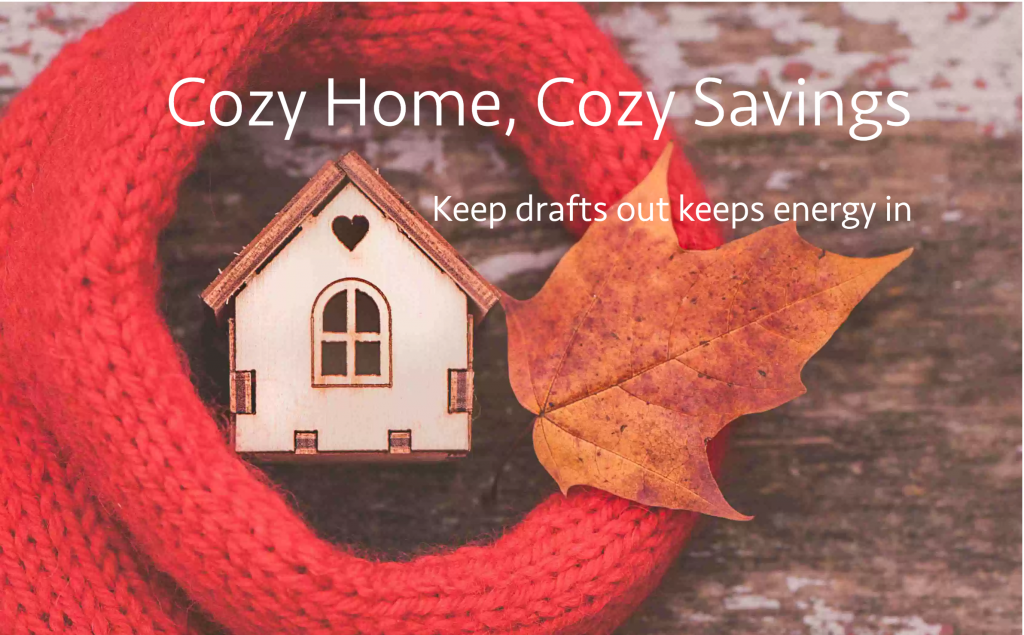
Stop Your Youse From Leaking Money
They say, “A wo/man’s – home is their castle,” and like castles, our homes are built to protect us from the dangers of the outside world. In our suburban sanctums, we find refuge against a variety of quotidian dangers and inconveniences. Be they blizzards, burglars, bugs, or brownie-hawking girl scouts, our abodes are designed to keep dangerous and unwanted elements at bay.
But this article isn’t about ways to improve your home’s ability to keep things out – rather, we’re going to explore how well your house keeps things in.
Specifically, we’ll be focusing on how well your home traps and retains energy. Being able to prevent energy from escaping through walls, window frames, and porous insulation is pivotal to reducing your household’s energy needs – and bringing down your monthly energy bills. While most people are concerned with turning their house into a castle, today we’ll explore how to turn your domicile into a dungeon for wanderlust-stricken photons and help your castle protect its crowned Joules.
While most people are concerned with turning their house into a castle, today we’ll explore how to turn your domicile into a dungeon for wanderlust-stricken photons and help your castle protect its crowned Joules.
A Leaky House Leads to a Leaky Wallet
There’s a good chance that your home lacks sufficient insulation for attaining optimal energy-efficiency levels.
According to a recent study, 90% of American homes don’t have the correct amount of insulation. And, according to statisticians, there is a very good chance that if you live in America, you fall within a subset that includes 90% of its inhabitants.
Without the coverage of a comprehensively-designed system of insulation, your home may very well be emanating vital – and expensive – heat back into the world. This, in turn, results in needlessly high utility bills born from the expensive process of regenerating lost heat.
While your utility provider may relish the opportunity to sell you more energy than necessary, nobody else wins in this equation. Generating more heat or electricity through conventional methods such as coal, oil, and gas only enlarges humanity’s carbon footprint, and increased demand-side pressure on utility companies forces them to escalate their production volume. This results in prices that soar so high, they can almost touch the hole in the ozone layer created by the burning of fossil fuels as companies are forced to invest in a broader network of resources in order to make supply meet demand levels.
While energy itself is never created nor destroyed, the same cannot be said about bank accounts.
Projections by the state of Massachusetts forecast the cost of oil to rise by 17% this year, with the total price of using oil to keep a house at a comfortable temperature throughout the winter expected to total in at a bitterly uncomfortable $2278.
At prices, this high, neglecting to get the most out of the heat for which you’ve paid can have disastrous results upon your bank account and can turn “…The most wonderful time of the year,” into an ongoing financial crisis.
Fortunately, by obtaining a no-cost Mass Save® home energy audit through Neeeco, you can get a comprehensive assessment of your home’s energy-efficiency profile – allowing you to pinpoint where it excels at hoarding warmth, and which areas are in need of strengthening. So contact us today to set up an appointment that costs nothing and saves big.
What Makes Homes Lose Energy?
Though energy takes the path of least resistance, it’ll take any path available to resist your efforts to keep it confined. While some of the avenues energy takes as it makes its great escape are well-known, others are far less intuitive.
Some of the ways in which your home’s winter heat might try to leave home for the holidays
- Poorly Insulated Windows – Your windows are your porthole to the outside world. They tease the elements with the prospect of being able to caress you with their icy clutches while keeping you safely contained behind a protective layer of glass. However, many windows fail to deliver the separation they promise between the inside of your house and the outside climate and end up allowing energy to escape through cracks in the frame, panes of glass that are too thin, and panels that won’t close the full way. Our experts can assess the efficacy of your windows, and let you know if you’re trading indoor heat in exchange for the sunlight!
- Furnace Flues – If improperly configured, a furnace flue can serve as an exit hatch for warm air that should be keeping you and your family comfortable and toasty. Reign your home’s heat in by having one of Neeeco’s auditors evaluate the way air flows through your flue.
- Wiring Holes – Your home is filled with wires that do everything from conduct electricity to make it possible for you to access this very website. While these cables may tether you to an online, global collective, they also serve as a Zipline for energy trying to make a run for it!
- Attic Hatches – While attic hatches are easy to make more energy-efficient, their remote placement leaves them out of sight for homeowners – and makes it easy for them allow in cold air undetected.
How Can Neeeco Help?
Neeeco offers an extensive array of services for shoring up your house’s energy efficiency. In addition to providing an in-depth home energy audit, we can bolster your home’s energy retention levels through the following courses of action:
The Bottom Line
The EPA estimates that homeowners can lower their heating and cooling expenses by up to 20% by improving their home’s insulation.
If you feel your utility company provides a good enough service that warrants a 20% gratuity, then don’t worry about making your home more energy-efficient. However, if you want to improve your home’s carbon footprint while preventing your hard-earned money from leaving your wallet, don’t hesitate to call Neeeco for a free, no-cost quote today!
Call (781) 514-5882 or contact us to get started with a no-cost Mass Save® home energy assessment.
